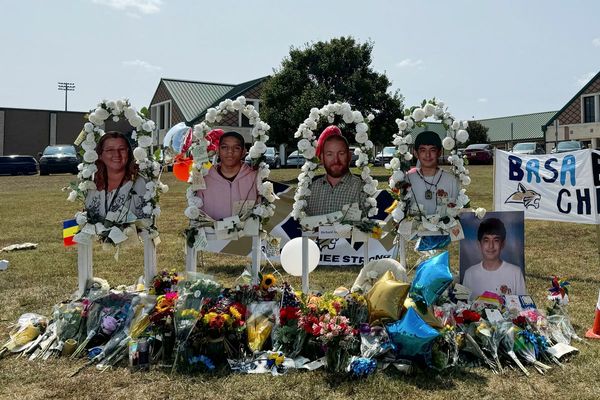When natural diasters occur, the ABC scrambles to provide emergency broadcasting and deploy news crews to cover the event and keep the community informed on radio, TV and digital platforms.
When these disasters happen in country areas, as they often do, our network of regional offices is the backbone of our coverage.
As torrential rain recently swelled many of Victoria's major waterways to major flood level, transport routes were cut, hundreds of homes were inundated and communities were isolated.
Alongside their city-based colleagues who travelled to the worst-hit areas, regional reporters and broadcasters notched up about 100 TV live crosses into local and national bulletins and the ABC News Channel, reports for radio news bulletins and crosses to local radio programs, plus a digital live blog, digital articles and social media posts.
While regional reporters have valuable local knowledge and insight that comes from living in the affected communities, it also meant they were covering a story that affected them personally.
The logistical challenges of reporting in regions as floodwaters rise are immense.
While we love Kerang in Victoria's north, being caught on the wrong side of the bridge could result in a journalist being stranded in town for weeks — they needed to be able to get the story but also get out before the roads were cut.
Some of our reporters had to sandbag their homes before getting behind a camera.
Others were confined to their homes, not by COVID this time, but by floodwaters in their backyards.
In times of emergency, traditional radio schedules go out the window.
We introduced a new program called Victoria All Over, dropping the regular Sunday morning national program in favour of local flood information.
Victorian Country Hour presenter Warwick Long broadcast from his home in Shepparton where ducks were converging on his backyard and friends were staying because their house was in danger.
Warwick, better known as Waz to Victorian local radio listeners, broadcast that Sunday morning for a cool five hours of rolling coverage, including a last-minute interview with Prime Minister Anthony Albanese.
Waz hadn't had a lot of time to prep for the show — hours earlier he'd been on the shovel filling sandbags.
In the job description of regional chief-of-staff there's no key performance indicator around sandbagging skills but ABC Goulburn Murray COS Gaye Pattison was called upon to dig deep.
She drove from Wodonga to secure the Shepparton radio studio, enlisting help from colleagues Callum Marshall and Rosa Ritchie to place bags at the front door and even going to the extent of sandbagging the toilet when it was unclear how high the Goulburn River would peak.
Rosa had sandbagged her own home and moved in with mates, taking only what possessions could fit in her car, then continued to file stories on the impact of the disaster.
The new on-air Breakfast team arrived in town as the flood peaked — Nic Healey from Dubbo and Georgie Carroll from Melbourne — and jumped in the deep end, immediately hosting programs focused on flood recovery.
Central Victorian news journalist Sarah Lawrence reported from Rochester several times — in the days before the town was flooded, when the town went under and after the water receded and she was stunned by what she witnessed.
"Two days prior to the flood that inundated Rochester, I felt a weird, anxious instinct that I had to cover this story and told my chief of staff Sian Gard I thought we needed to get to Rochester," she recalls.
"It was busy, people were sandbagging madly and collecting supplies for the days ahead.
"When I returned on the Friday morning, the day the flood waters covered the town, it felt eerie and quiet.
"I was working with a camera operator and we shot our story and left the town just in time.
"Water was inundating the roads as we left, a playground which only an hour earlier was dry was now under water and we could see water rapidly rising up the side streets.
"It was extraordinary to see after taking photos of the Campaspe River the day before, which then looked like your average flowing river.
"The day after the floods, we waited outside a sewerage farm office on the edge of town which had become makeshift relief centre for the people who had ignored the earlier evacuation order and were arriving on boats and in big vehicles.
"There was a lot of emotion from people who had lost everything and walked out to be taken into the care of generous friends and family.
"Every second person had a dog with them, bringing some relief and a smile to the sad faces.
"It was a poignant reminder that even when you have lost the roof over your head, your family and loved ones warm your heart."







